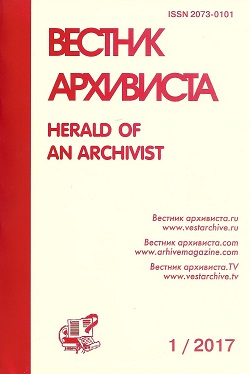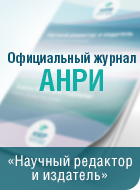| 10 March 2022
Posted in
Publishing soon
Scientific article
УДК 94(470)+322+94(271.2)
DOI 10.28995/2073-0101-2022-1-24-35
Usachev, Andrei S.
Russian State University for the Humanities, Moscow, Russian Federation
The Status in the World and the Church Career in Russia in the 16th Century
Abstract
The article reviews the peculiarities in the biographies of some Russian church leaders. The author shows that successful church and administrative career demanded more than patronage of the representatives of political and church elite. The latter only paved the monk’s way to consecration. To enter the narrow circle from which the candidates were elected demanded observation of other rules: usually, monastic vows taken at early age, lengthy monastic service (30 years in the least), as well as education (knowledge of the Holy Scriptures, Patristic literature and hagiography, basics of worship). The noble origin didn’t play any significant role. The author have managed to discover only four bishops (out of 120) belonging to aristocratic families from the Boyar Duma. The article notes several exemptions of these rules: the Novgorod archbishop Serapion I (1506–09), metropolitan Afanasii (1564–66), metropolitan Dionisii (1581–86), and also the Kazan metropolitan (1589–1606) and later patriarch (1606–1612) Germogen became heads of their dioceses after a short monastic service (1 to several years). Some were under the patronage of grand princes. However, their successful career cannot be explained by that reason only. It has been established that in some cases there was a special variant of the church career. These 4 representatives of the church elite began their careers as white priests, thus obtaining the necessary knowledge and skills to head of the church. They differ from other monks belonging to other social groups who spent decades on obtaining the necessary knowledge and skills. The study of the biography of the Vologda archbishop (1588–1603) and the Rostov metropolitan (1603–1604/1605) Iona (Dumin) gives reason to suppose that he also belonged to the white clergy group. The author demonstrates that the 16th century saw an emergence of this tendency (when the representatives of the white clergy took higher positions in the church hierarchy), which manifested itself more clearly in the 18th and 19th centuries. If in the 16th century white clergy numbered about 43% of bishops, by late 19th century their proportion reached 87,67%.

Keywords
Russian History, church history, 16th century, church hierarchy, clergy, episcopate, Church Council, church-state relations, Metropolitan Afanasii, Patriarch Hermogenes.
References
BASHNIN, N. V. Mitropolit Iona (Dumin): knizhnik i politik [Metropolitan Iona (Dumin): Bibliognost and politician. In Russ.]. IN: Rossiiskaya istoriya, 2021, no. 5, pp. 48–60.
ZAPAL'SKII, G. M. Nastoyateli muzhskikh monastyrei v Rossii v sinodal'nyi period i ikh sotsial'noe proiskhozhdenie [Abbots of male monasteries in Russia of the Synodal period and their social origin. In Russ.]. IN: Monastyrskaya kul'tura kak transkonfessional'nyi fenomen [Monastic culture as a trans-confessional phenomenon]. Moscow, Politicheskaya entsiklopediya publ., 2020, pp. 279–287.
MATISON, A. V. Pravoslavnoe dukhovenstvo russkogo goroda XVIII veka: genealogiya svyashchenno-tserkovnosluzhitelei Tveri [Orthodox clergy of the Russian city of the 18th century: Genealogy of the Tver clergy. In Russ.]. Moscow, Staraya Basmannaya publ., 2009, 268 p.
MOISEEVA, G. N. Zhitie novgorodskogo arkhiepiskopa Serapiona [The Life of Archbishop Serapion of Novgorod. In Russ.]. IN: Trudy Otdela drevnerusskoi literatury. Leningrad, Nauka publ., 1965, vol. 21, pp. 147–165.
USACHEV, A. S. Pochemu zakonchilas’ “volokolamskaya gegemoniya” v Russkoi tserkvi XVI v.? [Why did the “Volokolam hegemony” in the Russian church of the 16th century come to an end? In Russ.]. IN: Rossiiskaya istoriya, 2017, no. 5, pp. 97–113.
USACHEV, A. S. Knigopisanie v Rossii XVI veka: po materialam datirovannykh vykhodnykh zapisei [Russian manuscripts of the 16th century: Materials of dated colophons. In Russ.]. In 2 vols. Vol. 1. Moscow, St. Petersburg, Al’yans-Arkheo publ., 2018, 472 p.
About the authors
Usachev Andrei Sergeevich, professor of the Russian Academy of Sciences, PhD in History, associate professor, Russian State University for the Humanities, department of history and theory of historical science, professor, Moscow, Russian Federation, +7 917-540-4379, This e-mail address is being protected from spambots. You need JavaScript enabled to view it
Grant information
The article has been prepared with the financial support of the Russian Science Foundation (project no. 20-18-00218).














